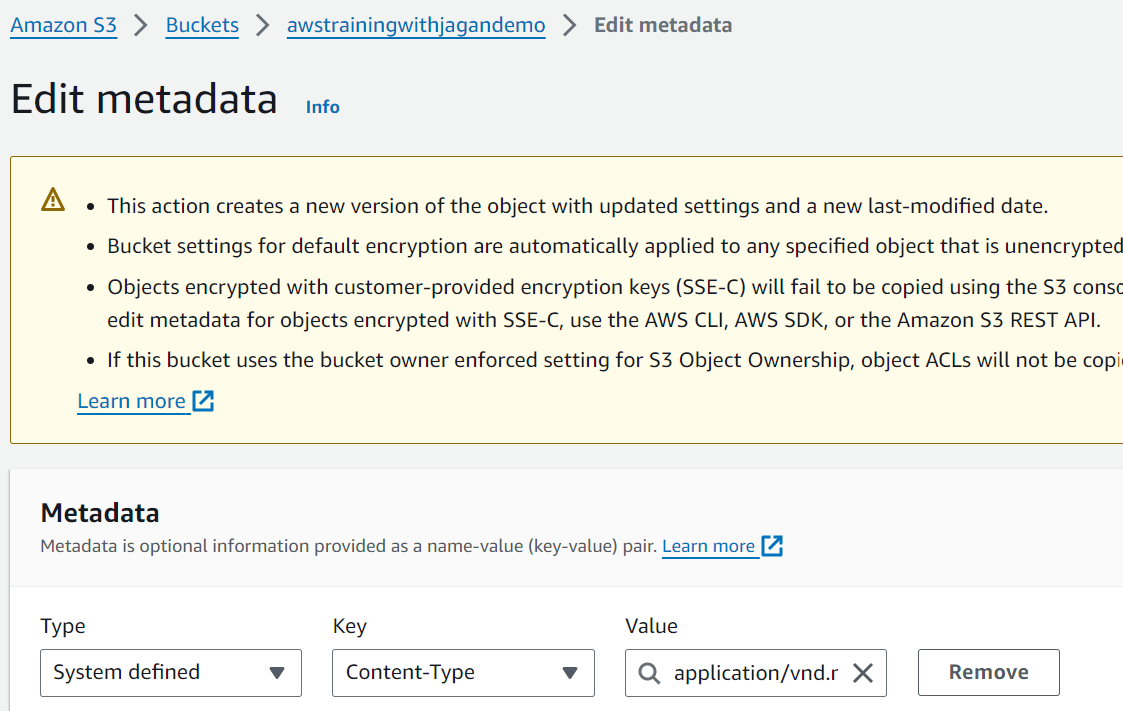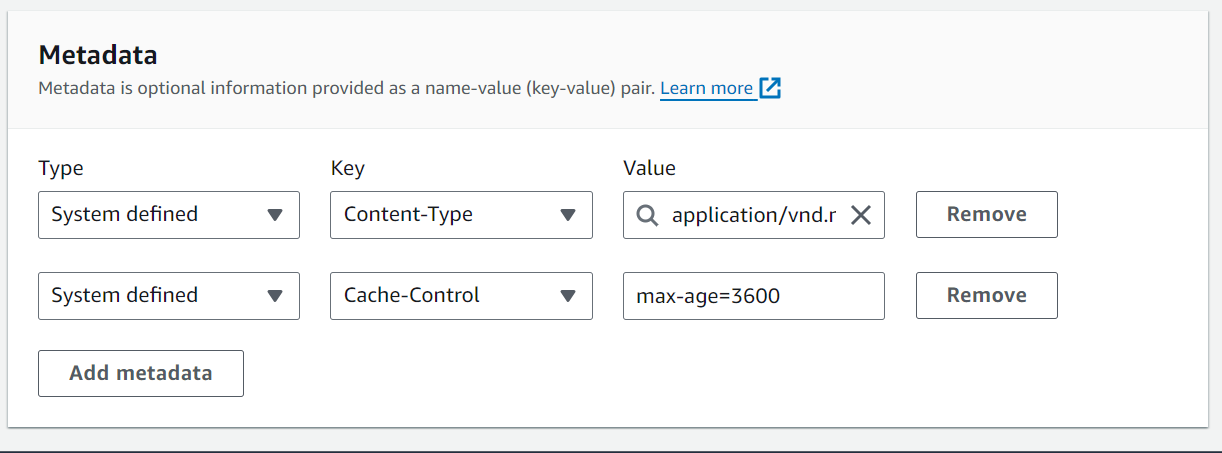8.6 Effective Use of Caching on AWS S3 Bucket
When leveraging Amazon S3 (Simple Storage Service) for storing and serving content, effectively using caching mechanisms can significantly improve performance, reduce latency, and lower the costs associated with data transfer. Caching can be implemented at various levels, including the client-side, within the AWS infrastructure (like CloudFront), and through cache-control headers in S3. Here’s how to make effective use of caching with AWS S3:
1. Understanding Cache-Control Headers at Individual object level
- Cache-Control headers are used to specify directives for caching mechanisms in both requests and responses. When you set these headers for your S3 objects, you inform client-side caches and intermediate proxies (like CloudFront) how to cache the data.
- Use the
max-agedirective to specify how long (in seconds) the object should be considered fresh. After this period, the cache will revalidate the content with the origin server.

Set cache for more than one hours

2. Leveraging Amazon CloudFront
- Amazon CloudFront is a content delivery network (CDN) that caches copies of your S3 content in multiple locations worldwide (edge locations). This brings the data closer to your users, reducing latency.
- CloudFront works seamlessly with S3, allowing you to cache static content effectively and serve it with low latency. You can define different cache behaviors based on path patterns, query strings, and more.
3. Implementing Browser Caching
- Encourage browser caching for static assets like images, CSS, and JavaScript files. This reduces the number of requests to your S3 bucket, speeding up the user experience for repeat visitors.
- Set appropriate
Cache-Controlheaders on your S3 objects to control how long browsers should cache the assets.
4. Using Signed URLs with Expiry for Dynamic Content
- For dynamic or private content that should not be publicly cached, use S3’s signed URLs with an expiry time. This ensures that the content is only available for a limited period, enhancing security and control over access.
5. Optimizing S3 and CloudFront Settings
- S3 Transfer Acceleration: Speed up the upload of static content to your S3 bucket by enabling S3 Transfer Acceleration. This is especially useful for populating your bucket with initial or frequently updated content.
- CloudFront Geo Restriction: Use CloudFront’s geo-restriction feature to control which countries your content is served to. This can also indirectly impact caching strategies by focusing on specific regions.
6. Monitoring and Adjusting Caching Strategies
- Utilize AWS monitoring tools like CloudWatch and S3 Analytics to monitor access patterns and cache hit ratios. This data can help you adjust your caching strategies for optimal performance.
- Regularly review your cache settings to ensure they align with your content update frequency and access patterns. Adjust the
max-ageand other directives as necessary.
7. Considerations for Content Invalidation
- In situations where content needs to be updated before the cache expires, CloudFront allows you to invalidate cached objects. However, frequent invalidations can increase costs and complexity.
- Design your content update strategy to minimize the need for invalidations. For example, use versioned filenames for assets that change frequently.
Conclusion
Effective caching can dramatically improve the efficiency and performance of your AWS S3-hosted applications. By strategically using Cache-Control headers, integrating with Amazon CloudFront, and monitoring your caching effectiveness, you can provide a faster, more responsive user experience while optimizing costs. Always tailor your caching strategy to the specific needs and access patterns of your application.
